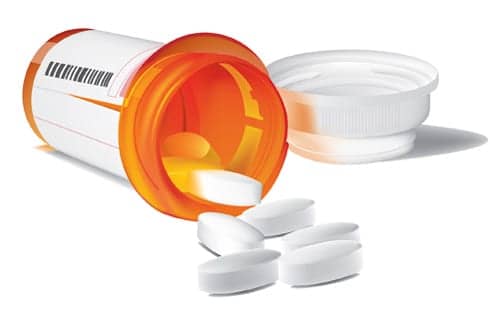Pediatric patients may be prescribed more opioids than necessary following surgery, according to research presented at ANESTHESIOLOGY 2015. The study found nearly 60% of opioids dispensed to pediatric patients following surgery remained unused, which could lead to the unused medication being abused by other adolescents in the household.
“We not only found that some physicians inadvertently may be prescribing more medicine than is being used or needed, but the majority of unused opioids are not being disposed of properly at home,” said Myron Yaster, MD, professor in the Departments of Anesthesiology and Critical Care Medicine and Pediatrics at Johns Hopkins University School of Medicine, Baltimore. “This is of particular concern, since almost half of the patients studied had adolescent siblings who are at a distinct risk of abusing prescription opioids.”
According to the authors, the treatment of pain has become a national priority, which has led to increases in both the number of opioids prescribed and the amount of opioids dispensed. Unfortunately, unused opioids can be “diverted” — the transfer of a prescribed drug from the individual for whom it was prescribed to another person for illicit use — which has led to an epidemic of non-medical use of prescription opioids.
Increasingly, the non-medical use of prescription opioids is being recognized as a primary gateway to narcotic addiction in adolescents. This may be due to both drug availability and the misconception that prescribed medicines are “safer” than non-prescription drugs obtained on the street, the authors note.
In the study, researchers examined 292 pediatric patients who were admitted to Johns Hopkins Hospital for surgery and were given opioid prescriptions at the time of discharge. The patients ranged in age from 1 to 21 years old (average age was 11 years). Parents were interviewed by phone within 48 hours after discharge, and again 10 to 14 days later, to determine if the prescriptions were filled, if pain was controlled, how long opioids were used, how much medication remained at the completion of therapy, if parents were given instructions regarding disposal of leftover drugs, and if the remaining drugs were, in fact, discarded. Additionally, information was gathered on the number and age of all individuals residing in the household.
Oxycodone (liquid or pill), was the most commonly prescribed opioid (89% of patients) and was extremely effective at treating pain — 81% of respondents rated the pain relief as good to excellent.
Opioid medication was dispensed in quantities that would provide 10 to 14 days of around-the-clock pain control, but was only used an average of five days. At day 14, an average of 36 pills and 67 mL of liquid opioid medication remained unused.
Most parents (82%) were given no instruction about what to do or how to properly discard leftover medication, resulting in only 6% of patients’ parents disposing of opioids at the conclusion of therapy. Forty-six percent of patients had adolescent siblings, age 12 or older, who could be at risk for misusing the leftover prescription opioids.
“More research on opioid usage based on disease, age and gender is urgently needed to provide physicians and others with the data they need when writing opioid prescriptions to aid them in better assessing how much opioid medication to dispense,” said Dr Yaster. “We are planning to conduct additional studies aimed at this goal with the hope of limiting the amount of unused medication available for misuse.”










